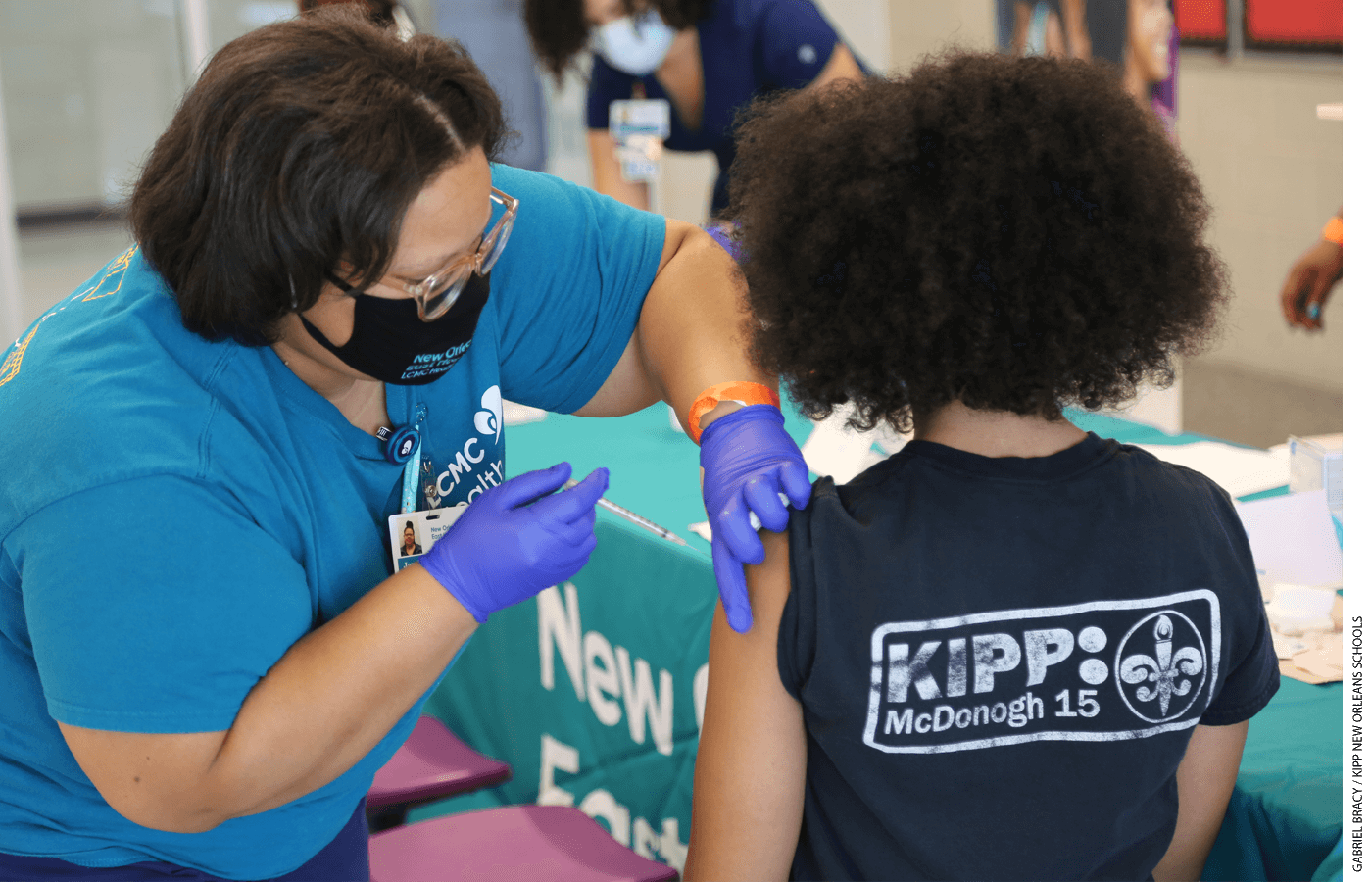
Now that Covid-19 vaccination efforts across the country are in full swing and President Joe Biden has asked state governors to prioritize teachers for vaccination, everybody is wondering: how are we going to distribute the vaccines? Including schools as vaccination sites will help ensure teachers get vaccinated.
While guidance from the White House does not make teacher vaccinations a prerequisite for reopening schools, vaccinating teachers is a positive step in reopening schools, getting people back to work, and kickstarting the economy. The next step should be including all public schools in a nationwide rollout effort. The Council of the Great City Schools, which includes 76 of the largest public-school systems, is already pushing to use school buildings as vaccination sites. Schools are not only already connected to teachers, students and families, they are also strategically located in urban and rural areas to provide easy access to the larger community.
And this is something that has been done before. Laurie Combe, president of the National Association of School Nurses, has spoken about how, during the H1N1 outbreak, school districts in Texas worked to vaccinate the general public on weekends.
Now that the federal government has stepped in to encourage states to prioritize teachers for vaccination, the Biden-Harris administration should provide incentives for states to prioritize teachers and set forth a clear plan for distribution. Here are some recommendations:
Use schools as vaccination sites. There are 12,000 school buildings in major cities and a precedent for schools to be used as vaccination sites. The White House’s emergency vaccination plan already includes school gyms within the list of facilities that can serve as community immunization sites. There should be a widespread push to set up vaccination drives at schools, which will not only ensure that teachers can get vaccinated where they work, but also provide community-based vaccination access for other eligible groups. KIPP schools and districts in Los Angeles and Alaska, are ready and eager to be partners in this effort.
I realize that this might seem like an unsurmountable burden to place on schools that are already overwhelmed. But most schools are not currently operating at full capacity, so there is unused space. For example, physical education and theatre classes have been halted in schools, so that allows the use of those spaces. And if the use of facilities is an issue, there have been successful drive-through models that could be set up that doesn’t require additional indoor space. Many schools already have on-site space for nurses that could be used.
For example, our schools in New Orleans partnered with local healthcare systems and providers to hold vaccination events for teachers and staff, which have also been extended to other teachers in the area. As a result, more than 65% of our New Orleans teachers have been vaccinated and more are expected in the coming weeks.
The last year has been full of disruptions for schools, and this effort would help solidify plans for in-person instructions for millions of students.

Support infrastructure improvements for vaccine distribution. Right now, many of the constraints on getting vaccines into arms are logistical. School districts, while ideally positioned to be vaccination partners, are not currently equipped to distribute vaccines at scale. Meanwhile, healthcare providers are constrained by staffing shortages and challenges with vaccine transportation, storage, and handling. The administration must provide discretionary funding and logistical support to help bridge these gaps.
Ramp up testing efforts and availability. Even once teachers are widely vaccinated, Covid-19 outbreaks will still happen. While the president announced recently that U.S. would have enough vaccines for every adult by the end of May, there is currently no approved vaccine for children 15 or younger. In conjunction with making sure teachers are vaccinated, we must provide regular, widespread access to testing for everyone in and around schools. Part of the Biden-Harris administration’s $1.9 trillion stimulus plan includes $50 billion to escalate Covid-19 testing, which is an encouraging start. But the administration will need to ensure consistent, copious funding for testing in the long term, as well as looking to innovative state-based programs like COVID Check Colorado that can be scaled across the country.
These are steps that will benefit not only our teachers and the students they teach, but also entire communities. I know that this is just the beginning, and that there are many competing priorities in the push to vaccinate all Americans against Covid-19. But it’s also clear how urgently important it is to get students and teachers back in the classroom safely. That means getting teachers vaccinated widely and quickly, and getting schools involved.
Richard Barth is CEO of the KIPP Foundation.
The post How Schools Can Help with the Vaccination Rollout appeared first on Education Next.
[NDN/ccn/comedia Links]
News.... browse around here
No comments:
Post a Comment